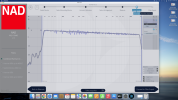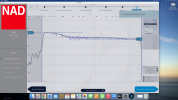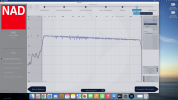I thought I was clear enough: I aligned the speakers by putting their acoustic centres at the same distance from the centre of my head in the listening position. Alignment can be done with delays in DSPs and positioning the speakers at any precision you want, even microseconds. However let me say that 0.1ms is just 3.4 cm in space, so it's nice to have but a little overkill, considering that your head will hopefully move a little, when you're on the sofa listening to your favourite music or enjoying your favourite movie.
There are plenty of ways to do that. Having had the chance to look a bit deeper in how you made it, yes, this is one. I guess another one could be using REW to play a swept sinusoidal tone covering the exact band of the speaker under test, then see the corresponding impulse transformate, from which getting to the delay information is a breeze (albeit I give you a point: I would not be able to tell the accuracy due to my fading memories in math). In such case of course the swept tone should be played with the option to first playing a high pitch tone from the tweeter, to set the reference "0" for timing, just as you have made. Such option is already included in REW.
My speakers (Neumann KH310A) are active type studio monitors. Each driver has its own amp inside, and I am assuming that the manufacturer has already included time delays in the amps to time-align them. Ok, given that these speakers have no DSP inside, there is indeed a chanche that this assumption is wrong. However in any case there's not much I can do to improve the time alignment if I discovered that it is bad, considering that there's a single common analog input on the box and for sure I'm not going to open the speakers and pull out the 3 individual inputs. Yes, I could check the time alignment of the 3 drivers, for instance with your method, but for the reason I just explained, I don't see much point in even bothering.
Yes, I see your point regarding the need to check the time alignment of the subs with the main speakers by measurements, so I'll make some when I'll be back from the vacations. However the only thing I could do to adjust the relative timing from subs to mains is moving the subs back and forth, because the XO circuit from subs to mains is inside the subs, and there's no option for time delay/group delay compensation, but only a variable phase compensation. I guess everything is done by the automated MA-1 calibration software, considering that it acts on the DSP parameters inside the subs (so setting a delay/performing group delay compensation, is possible), and that such software is also specifically designed for dealing with that model of main speakers connected. I agree however that the use of MA-1 calibration suite limits the freedom of what can be done manually. Neverthess, it beats any manual EQ I managed to apply so far.
So If I understand well what you mean for validated, you can demonstrate that you can reach time accuracy of 0.1 ms in your measurements. Fair well...
EDIT: some typos / some rewording






